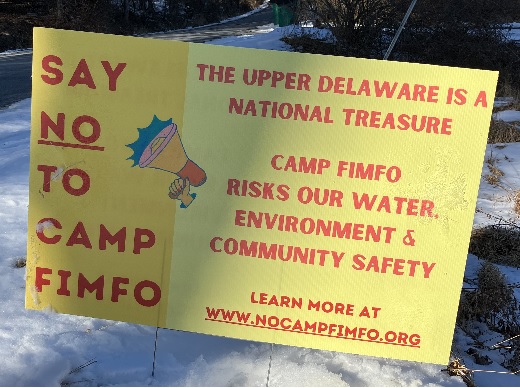Fracking Ban Rally Outside NY State of State Address
January 9, 2013More than Half of Ozone-Forming Pollutants in Erie, CO, Come From Drilling Activity
January 17, 2013By Jon Campbell, Poughkeepsie Journal.com, Jan. 14, 2013
New York regulators may have to signal a decision on hydraulic fracturing by Feb. 13 if they hope to meet an end-of-the-month deadline for completing a set of proposed regulations.
The state Department of Environmental Conservation faces a Feb. 27 deadline to either complete the planned hydrofracking rules or allow them to expire.
But an extensive environmental review — known as the Supplemental Generic Environmental Impact Statement — must be released first. State law mandates that the SGEIS must be released to the public at least 10 days before the DEC issues a “findings statement,” which would include an ultimate decision on whether to allow fracking in New York.
The document, which totaled 1,500 pages in a 2011 draft, would have to be published in the DEC’s official bulletin, which is printed each Wednesday. The final Wednesday that meets the 10-day notice period would be Feb. 13.
“We’re optimistically hopeful something will be released by (Feb. 13),” said Yvonne Hennessey, who represents the oil-and-gas industry as an Albany-based lawyer with Hiscock & Barclay LLP.
The DEC declined to respond to inquiries about the deadline.
While much of the focus has been on the Feb. 27 deadline, Feb. 13 could prove to be just as important in the fracking debate.
The proposed regulations, due Feb. 27, include the limitations and rules that would govern the natural-gas industry. The SGEIS, however, includes the reasoning behind the DEC’s decision-making and will ultimately decide whether high-volume fracking can move forward in New York.
The review process was first launched in July 2008, with large-scale hydrofracking on hold in New York in the meantime.
“Since the regulations are based upon the SGEIS for compliance (with state law), the SGEIS will have to be finalized at least 10 days prior to finalizing” the regulations, said Tom West, an Albany-based oil-and-gas-industry attorney.
Kate Sinding, a senior attorney with the Natural Resources Defense Council, said the DEC shouldn’t be bound to any deadlines as it continues to review the potential effects of fracking. Missing the regulatory deadline would require the state to restart the formal proceedings, which could push a decision back months.
“We continue to urge the department not to be bound by an arbitrary deadline, but rather to let the environmental and health review processes unfold on their own time,” Sinding said.
Proponents of fracking — who say drilling in the state’s gas-rich Marcellus Shale formation could boost the economy — have held out hope that the February deadline could finally put an end to the 41/2-year review and spur the DEC to make a decision.
Critics say the process can lead to environmental harm.
When asked in December whether the DEC plans to decide on fracking by the end of February, DEC Commissioner Joseph Martens said: “We hope so.”
If the SGEIS isn’t issued by Feb. 13, it “certainly wouldn’t be a good sign” for the gas industry, Hennessey said.
The DEC, however, has its hands full.
Opponents of fracking said they submitted 204,000 comments to the agency Friday, the last day for the public to weigh in on the proposed regulations.
The agency now has to review those comments and respond to any substantive issues that were raised. The DEC’s response would have to be released to the public before the Feb. 27 deadline.
The state’s response to a 2011 comment period, which drew 67,000 comments, totaled more than 240 pages.
“New Yorkers were tremendously productive in their 30 days of pushing back against the fracking regulations,” said Roger Downs, conservation director of the Sierra Club’s Atlantic chapter. “But now the DEC is on the clock and their task of responding to the sea of comments is much more daunting.”



